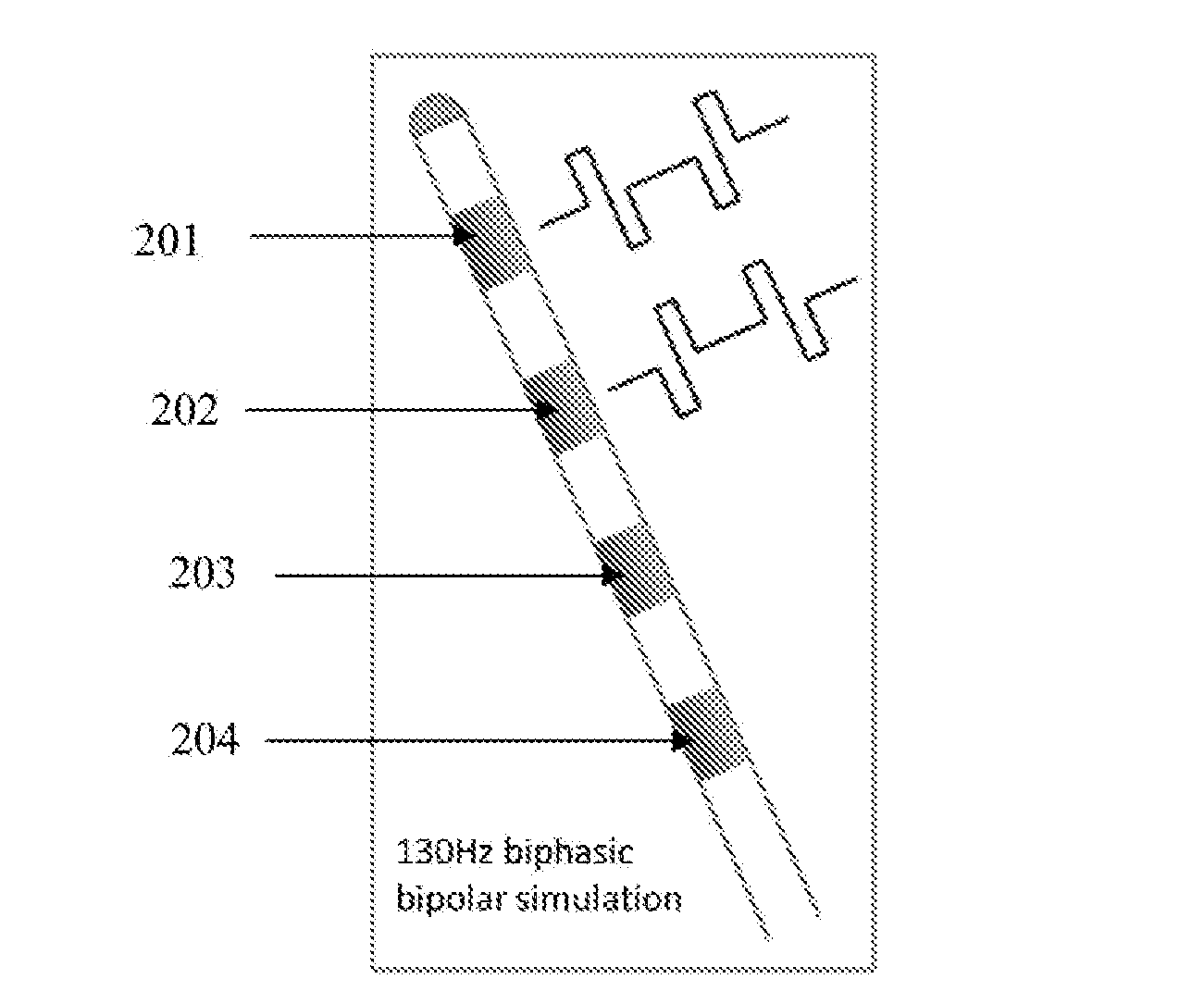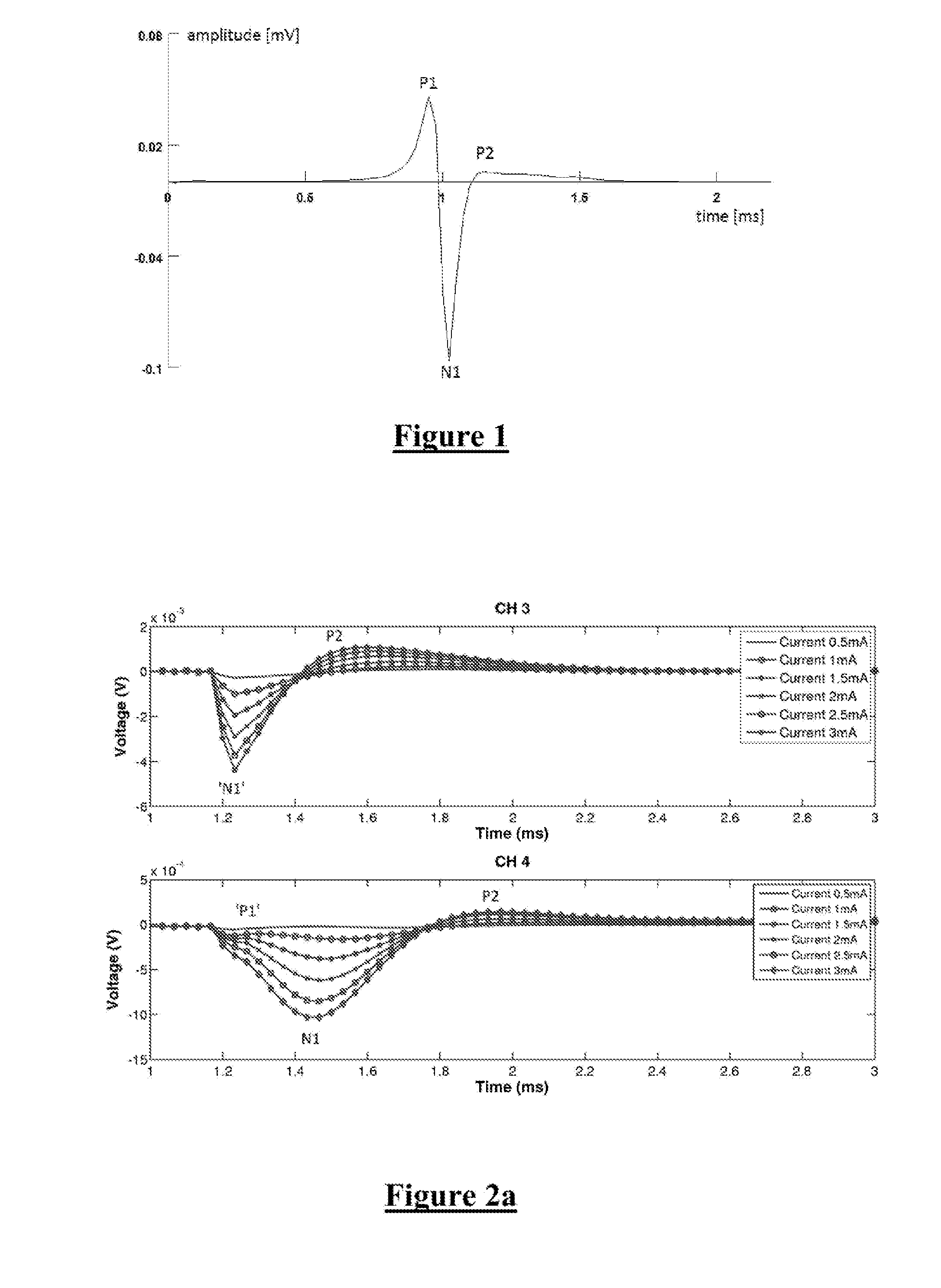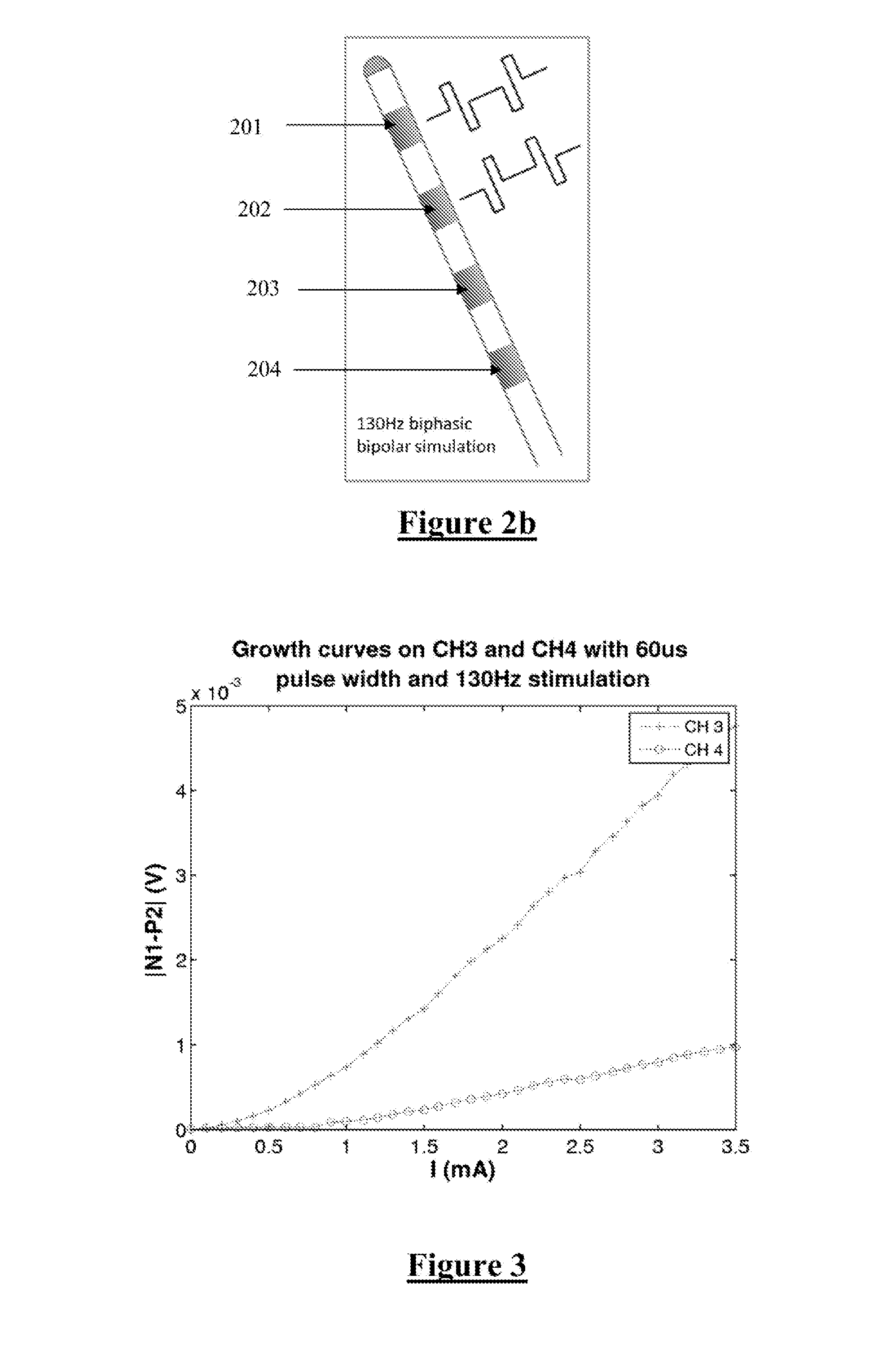Monitoring Brain Neural Potentials
a brain and neural potential technology, applied in the field of neuronal modulation in the brain, can solve the problems of inability to adequately measure the direct response of the target structure to the stimulus, and difficulty in measuring the direct response of the nervous tissue to stimulation
- Summary
- Abstract
- Description
- Claims
- Application Information
AI Technical Summary
Benefits of technology
Problems solved by technology
Method used
Image
Examples
Embodiment Construction
[0047]The following describes a number of embodiments utilising measurement of the compound action potential arising from stimulation of the subthalamic nucleus (STN), and a number of applications that these measurements may have such as for improving the therapy. While the following embodiments relate to STN stimulation for Parkinson's disease, it is to be understood that other embodiments of the invention may be applied to other applications of deep brain stimulation.
[0048]The combined response of nervous tissue to electrical stimulation usually takes the form of an evoked compound action potential (ECAP). For illustrative purposes, FIG. 1 shows the evoked action potential arising when simulating a single fibre from a spinal cord model. The three peaks characteristic of the action potential, respectively referred to as the P1, N1 and P2 peaks, are clearly visible. The typical response of multiple fibres together, namely the compound action potential (CAP), is usually smoother and ...
PUM
 Login to View More
Login to View More Abstract
Description
Claims
Application Information
 Login to View More
Login to View More - R&D
- Intellectual Property
- Life Sciences
- Materials
- Tech Scout
- Unparalleled Data Quality
- Higher Quality Content
- 60% Fewer Hallucinations
Browse by: Latest US Patents, China's latest patents, Technical Efficacy Thesaurus, Application Domain, Technology Topic, Popular Technical Reports.
© 2025 PatSnap. All rights reserved.Legal|Privacy policy|Modern Slavery Act Transparency Statement|Sitemap|About US| Contact US: help@patsnap.com



